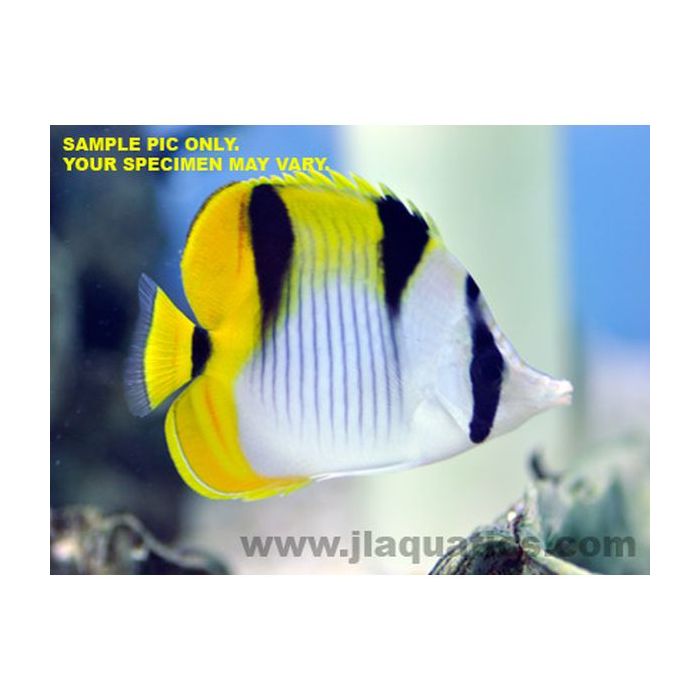Falcula Butterfly (Asia Pacific)
The magnificent Falcula butterfly is grace and beauty all rolled into one. Its entire dorsal fin and back is bright lemon yellow, and a crescent of deeper dandelion coats its rear fins and tail containing thinner stripes of bright tangerine to add extra appeal. Draped across its back are two wide stripes in inky black which taper down into narrow vertical bars. A dark mask covers its eyes and it has a long nose. It resembles the Double Saddle butterfly but has more yellow on its dorsal fin. It grows up to 8 inches and needs an aquarium of at least 125 gallons. It is regularly imported from Bali.
This species is normally quite peaceful, and should not be kept with aggressive tank mates. It can be kept in pairs which should be added at the same time to a large aquarium. Butterflyfish do not show differences between males and females. They are related to angelfish, but lack the angel's distinctive cheek spines.
A butterflyfish's favorite food is an anemone, so they should not be kept in the same aquarium with one unless it is guarded by aggressive clownfish. The butterflyfish knows to attack the anemone on its mouth, which does not sting, and will make a quick meal of it. Many species of butterfly also benefit from filamentous algae in the aquarium to graze on.
This species may nip on many types of corals, clam mantles, sponges, and feather dusters. They do not typically bother other types of invertebrates such as crustaceans. They feel most secure when there is plenty of live rock to hide in, as well as open space for swimming. This species may be difficult to feed and should be offered a variety of meaty and herbivore preparations such as frozen Mysis shrimp, half shell clams, marine algae and Spirulina; it should be fed 2-3 times a day. Very small individuals may have trouble acclimating to aquarium life, however large established specimens can compete with larger fish for food. Bloodworms or small live anemones may be used initially to entice it to feed. Soft food may also be pressed into the rock to provide grazing opportunities. Supplements such as Brightwell's Angelixer and Garlic Power may elicit a feeding response.
Customers who bought this also purchased
 Montipora - Cap - GreenOut of stock
Montipora - Cap - GreenOut of stock Montipora - Cap - RedOut of stock
Montipora - Cap - RedOut of stock
















